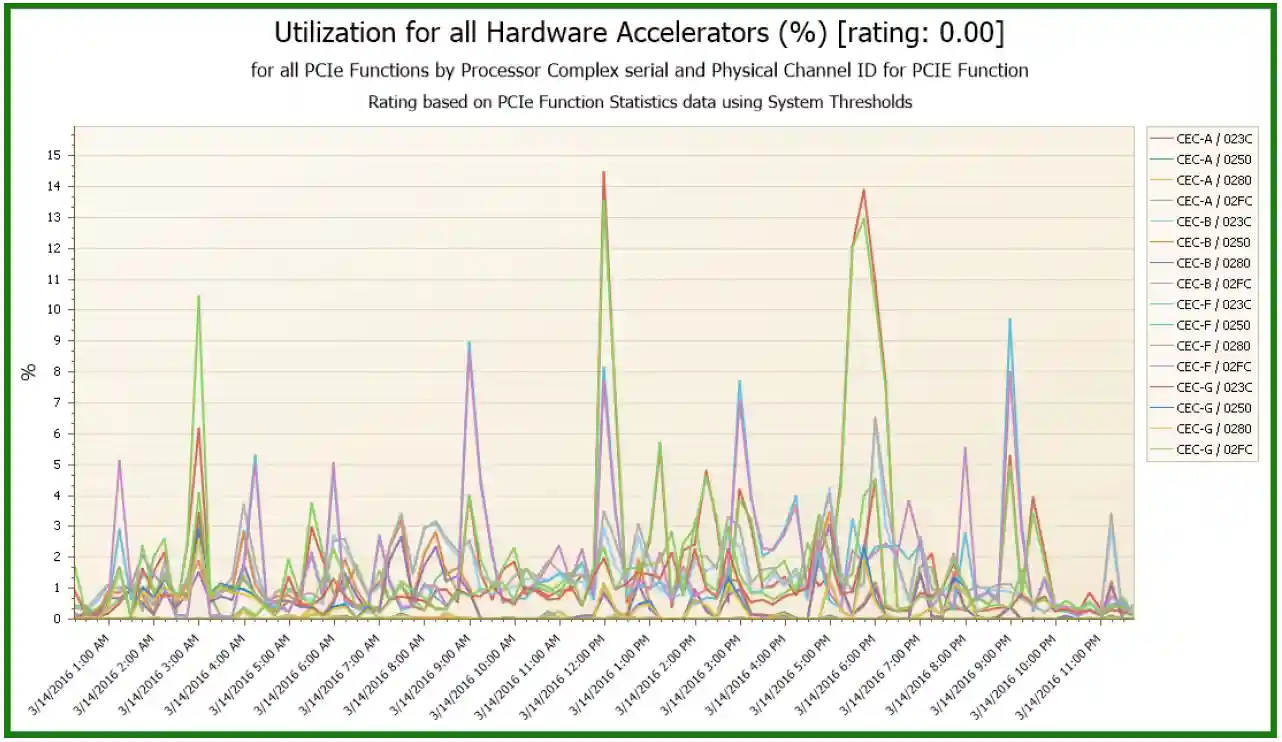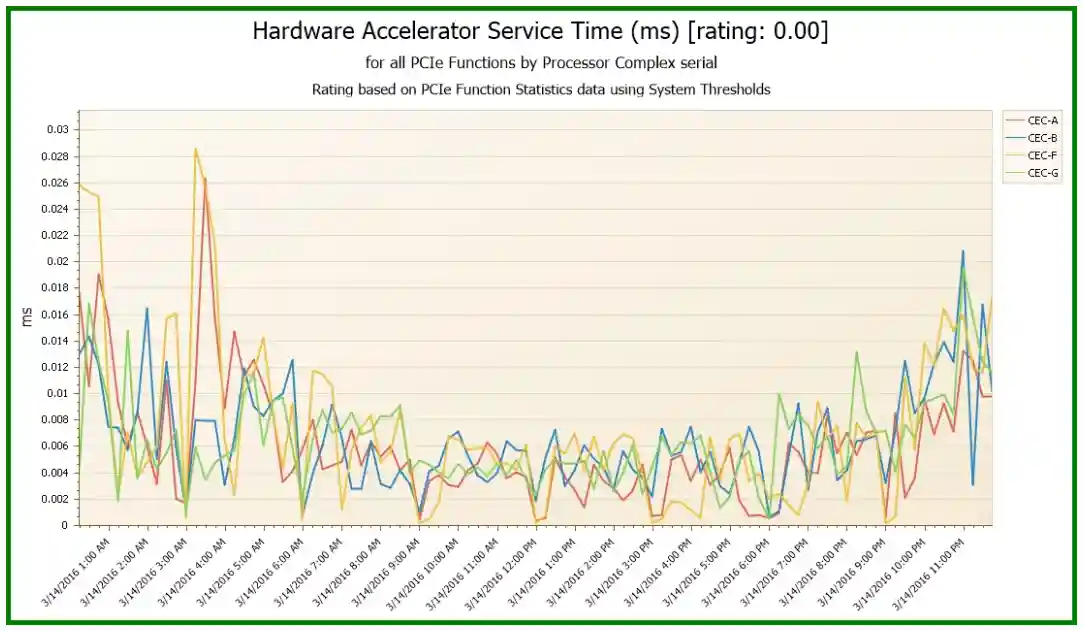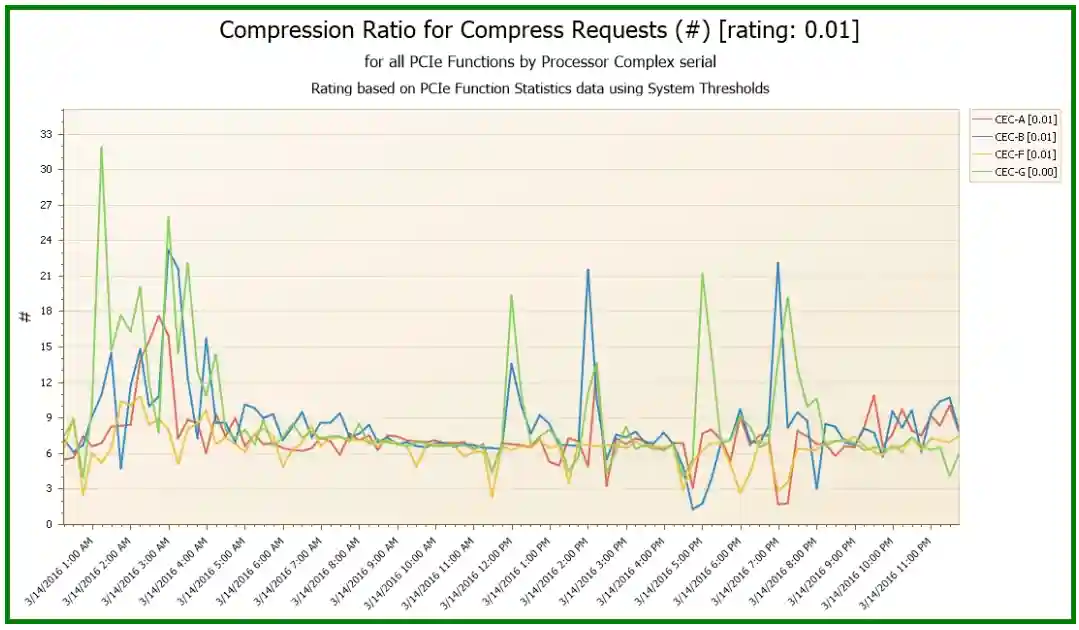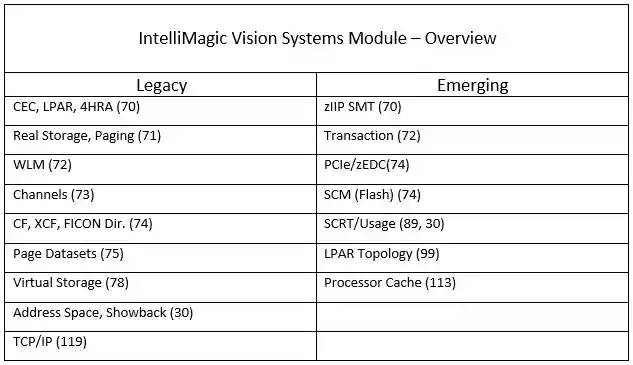One of the challenges our customers tell us they face with their existing SMF reporting is keeping up with emerging z/OS technologies. Whenever a new element is introduced in the z infrastructure, IBM adds raw instrumentation for it to SMF. This is of course very valuable, but the existing SMF reporting toolset, often a custom SAS-based program, subsequently needs to be enhanced to support these new SMF metrics in order to properly manage the new technology.
z Enterprise Data Compression (zEDC) is one of those emerging that is rapidly gaining traction with many of our customers, and for good reasons:
- It is relatively straightforward and inexpensive to implement.
- It can be leveraged by numerous widely used access methods and products.
- It reduces disk storage requirements and I/O elapsed times by delivering good compression ratios.
- The CPU cost is very minimal since almost all the processing is offloaded to the hardware.
A New Infrastructure Component to Manage
If you are implementing zEDC, these cards represent a new component in your infrastructure that must be managed to ensure sufficient capacity and consistent performance. The benefit of this is that it interprets and combines all the information in the SMF and RMF records, connecting the hardware view from the zEDC records with the SMF job records. It also provides a comprehensive set of reports out of the box. This gives you the visibility you need to effectively manage zEDC, along with all the other critical aspects of your z/OS infrastructure, without requiring any programming.
Visibility into Important Metrics
One metric of immediate interest for zEDC and other PCIe cards is the card utilization. This is essential to ensure the number of configured cards provides sufficient capacity to process the volume of compression activity in your environment without introducing delays that could impact the entire I/O infrastructure.
IntelliMagic Vision applies z/OS specific expert knowledge to key metrics to identify issues requiring attention before they impact production workloads. Rated metrics for PCIe cards like zEDC include service times and queue times, providing early warning when service is beginning to deteriorate.
What Compression Ratio Are We Achieving with zEDC?
One of the first questions about zEDC you are likely to be asked by management is “what compression ratio are we achieving?”
In the example above, compression ratios were typically 6:1 or better, but there was an interval around 5 pm when the ratio for one of the processors (CEC-B in blue) dipped to 1:1. This is a particularly powerful example of how the flexible drilldown capabilities all the way from the hardware perspective to the job level helped analyzing the problem. Drilling down on the data by system and ultimately by address space displayed the jobs executing at the time of the low compression ratio, see table below. Armed with the information that one job was the dominant user of compression at that time, issuing well over 700,000 requests, an informed decision could be made whether the data being accessed by that job warranted being compressed.
This visibility enables you to effectively manage zEDC (along with many other existing and emerging z/OS technologies) to maximize the benefit that can be achieved from this new technology.
This article's author
Share this blog
Related Resources
An Update on zEDC and the Nest Accelerator Unit (NXU)
Advancements similar to the NXU are likely to become more commonplace since raw processor speeds have plateaued. Specialized processing drives new metrics to manage an already complex system. What’s affected? How will you keep up?
zEDC Metrics Changes on z15 and z16 Processors
Learn how moving the compression function from PCIE-attached zEDC cards to the zEDC Accelerator has resulted in changes (reductions) in the metrics that are available.
Imagine How Much You Can Learn from SMF Data – Part 1
For both novices and experts, learning is greatly expedited by having easy visibility into SMF data so that all the time can be spent exploring, analyzing, and learning.
Book a Demo or Connect With an Expert
Discuss your technical or sales-related questions with our mainframe experts today






 Todd Havekost
Todd Havekost